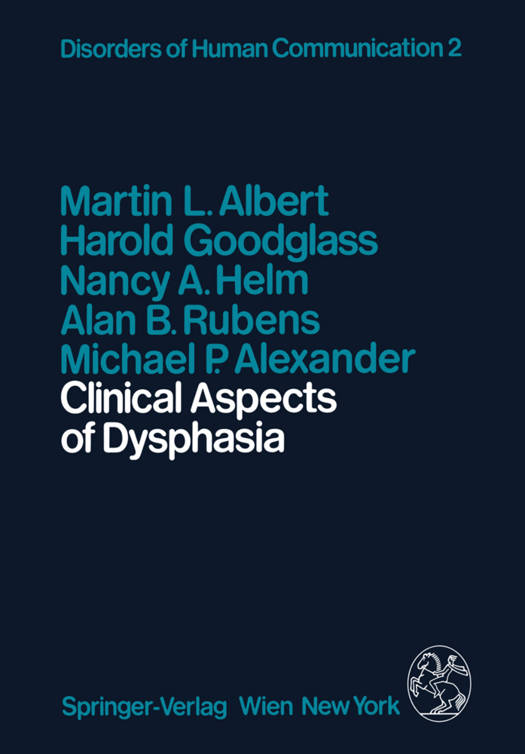
- Afhalen na 1 uur in een winkel met voorraad
- Gratis thuislevering in België vanaf € 30
- Ruim aanbod met 7 miljoen producten
- Afhalen na 1 uur in een winkel met voorraad
- Gratis thuislevering in België vanaf € 30
- Ruim aanbod met 7 miljoen producten
Zoeken
€ 110,95
+ 221 punten
Omschrijving
This volume is one in a series of monographs being issued under the general title of "Disorders of Human Communication". Each monograph deals in detail with a particular aspect of vocal communication and its disorders, and is written by internationally distinguished experts. Therefore, the series will provide an authoritative source of up-to-date scientific and clinical informa- tion relating to the whole field of normal and abnormal speech communication, and as such will succeed the earlier monumental work "Handbuch der Stimm- und Sprachheilkunde" by R. Luchsinger and G. E. Arnold (last issued in 1970). This series will prove invaluable for clinicians, teachers and research workers in phoniatrics and logopaedics, phonetics and linguistics, speech pathology, otolaryngology, neurology and neurosurgery, psychology and psychiatry, paediatrics and audiology. Several of the monographs will also be useful to voice and singing teachers, and to their pupils. G. E. Arnold, Jackson, Miss. F. Winckel, Berlin B. D. Wyke, London Preface Neurologists, neuropsychologists, speech pathologists and other clinicians who care for dysphasic patients have often complained that available books on dysphasia tend to be parochially theoretical, and insufficiently directed towards clinical reality. These books provide the categories, labels, and theoretical speculations of one school or another; but dysphasic patients as often as not do not fit neatly into a specific theoretical category. Clinical patterns of dysphasic syndromes of most patients with dysphasia rarely conform fully to the pictures painted in the textbooks.
Specificaties
Betrokkenen
- Auteur(s):
- Uitgeverij:
Inhoud
- Aantal bladzijden:
- 194
- Taal:
- Engels
- Reeks:
- Reeksnummer:
- nr. 2
Eigenschappen
- Productcode (EAN):
- 9783709186077
- Verschijningsdatum:
- 24/01/2012
- Uitvoering:
- Paperback
- Formaat:
- Trade paperback (VS)
- Afmetingen:
- 170 mm x 244 mm
- Gewicht:
- 340 g

Alleen bij Standaard Boekhandel
+ 221 punten op je klantenkaart van Standaard Boekhandel
Beoordelingen
We publiceren alleen reviews die voldoen aan de voorwaarden voor reviews. Bekijk onze voorwaarden voor reviews.








